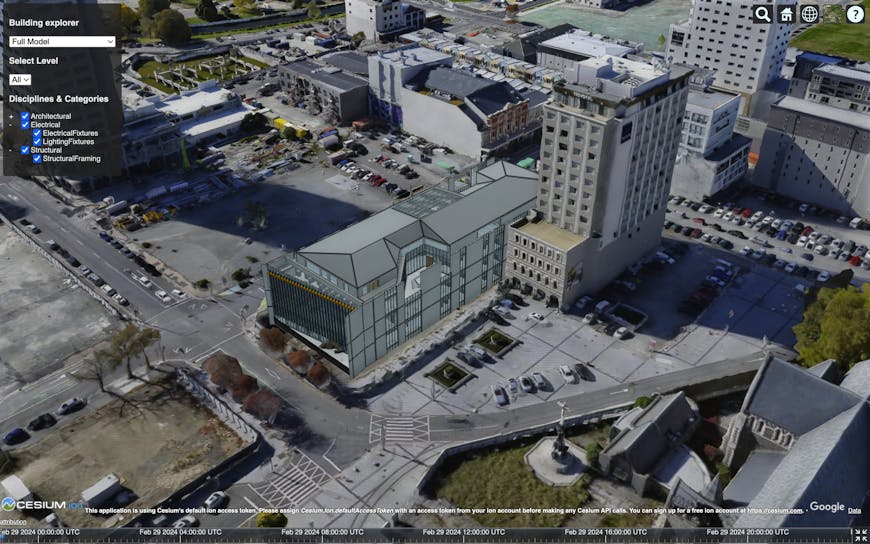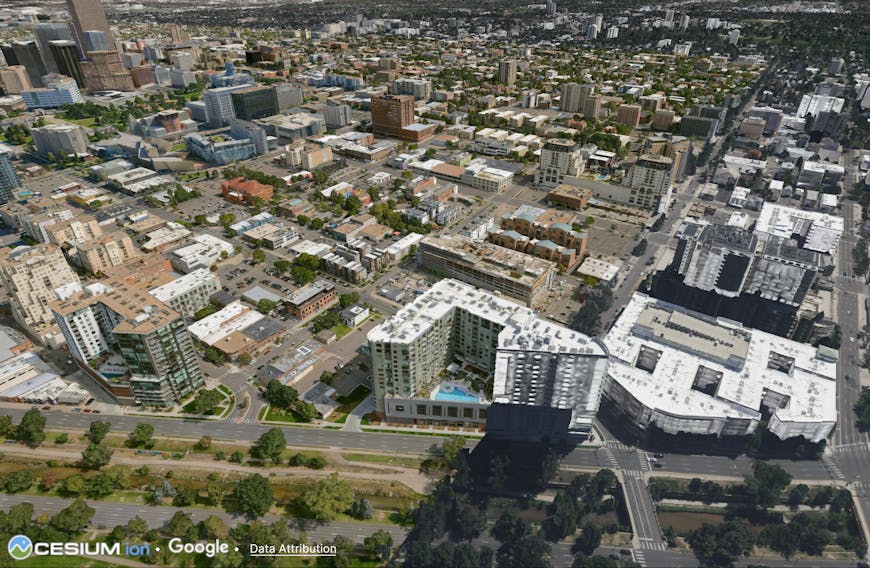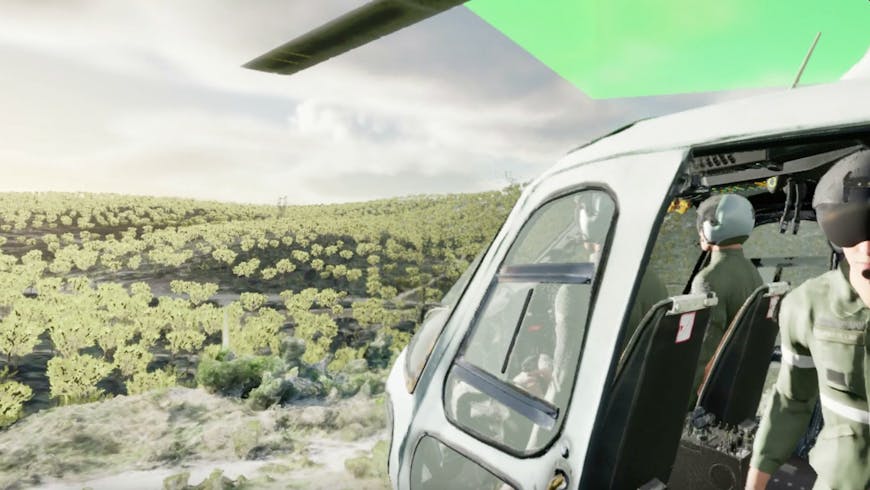Cesium Releases in March 2024
In February we shared how to configure Vite or webpack for CesiumJS. We hope these updated examples make it easier for anyone to start using CesiumJS in their projects.

South San Francisco, California, USA, as shown when loading the sample Vite and webpack projects in CesiumJS.
We made improvements across Cesium this month. To get notifications about our monthly releases, you can subscribe to the Cesium release roundup thread on our community forum.
CesiumJS 1.115 Release
CesiumJS 1.115 is now available. Highlights of the release include:
- Added support for I3S Building Scene Layer. #11678
- Fixed a bug where the camera can stay underground when 3D Tiles are loading in. #11824
- Fixed a bug where a mix of empty and non-empty tiles were not refining. #9356
- Fixed an error when the
screenSpaceEventHandlerwas destroyed beforeViewer. #10576 - Fixed how
Camera.changedhandles changes inroll. #11844 - Added
Scene.pickVoxelto pick individual cells from aVoxelPrimitive, andVoxelCellto report information about the picked cell. #11828
For more details, see the changelog.

I3S Building Scene Layer dataset from Esri visualized with Google Photorealistic 3D Tiles in CesiumJS.
Cesium for Unreal 2.4.0 Release
Cesium for Unreal v2.4.0 is now available. Highlights of this release include:
- Significantly reduced CPU memory used by glTF and raster overlay textures.
- Improved texture creation performance on non-D3D platforms.
- Added support for the
KHR_texture_transformglTF extension—including rotation—for feature ID textures and property texture properties. CesiumFeaturesMetadataComponentnow generates nodes forKHR_texture_transformif the extension is present in a feature ID texture or property texture property.
Check the Cesium for Unreal release and the Cesium for Unreal Samples release for the full list of updates.
Cesium for Unity 1.8.0 Release
Cesium for Unity v1.8.0 is now available. This release includes several bug fixes as well as the following highlights:
- Feature IDs and metadata are now parsed through the
EXT_mesh_featuresandEXT_structural_metadataextensions respectively. Models withEXT_feature_metadatawill still be parsed, but their metadata will no longer be accessible. - Added classes for accessing the contents of
EXT_mesh_featuresandEXT_structural_metadata. - Added
CesiumCartographicPolygonandCesiumPolygonRasterOverlay, which together can be used to clip out polygonal areas of aCesium3DTileset. These new classes are available in only Unity 2022.2+ because they require Unity's Splines package. - Added
materialKeytoCesiumRasterOverlay, which matches the overlay to its corresponding parameters in the tileset's material. This allows for explicit ordering of raster overlays and overlay-specific effects. - Added a
distanceproperty toCesiumOriginShift, which specifies the maximum allowed distance from the current origin before it is shifted. - Added support for the
KHR_texture_transformglTF extension—including rotation—in glTF material textures. The transformation is now applied on the GPU via nodes in the Material, rather than on the CPU by directly modifying texture coordinates.
Check the changelog for the full list of updates, and follow our Cesium for Unity tutorials to get started.

Aerometrex Denver Photogrammetry interlaid with Google Photorealistic 3D Tiles with the help of polygon clipping in Cesium for Unity.
Cesium for Omniverse 0.18.0 Release
Cesium for Omniverse v0.18.0 is now available. Highlights of this release include:
- Improved tile streaming performance by 35% by switching to UrlAssetAccessor from vsgCs.
- Added support for disk tile caching, which improves streaming performance by 50% when reloading the same scene.
- Added support for Web Map Service (WMS) raster overlays, Tile Map Service (TMS) raster overlays, and Web Map Tile Service (WMTS) raster overlays.
- Added raster overlay options:
maximumScreenSpaceError,maximumTextureSize,maximumSimultaneousTileLoads, andsubTileCacheBytes. - Added ability to bypass downloading of tiles clipped by a cartographic polygon raster overlay.
- Added support for globe anchors on non-georeferenced tilesets.
- The movie capture tool now waits for tilesets to complete loading before it captures a frame.
See the changelog for the full list of updates, and get started with our Cesium for Omniverse tutorials.

Land Zoning WMS Raster Overlay shown on Cesium World Terrain with Bing Maps Aerial imagery in Cesium for Omniverse. Courtesy NSW Department of Planning, Housing.(Licensed under CC BY 4.0.)
Powered by Cesium
In February we highlighted how the French Air Force uses Cesium for Unreal to augment helicopter training for pilots, crew members, and medics. The French Air Force Heli Lab began using Unreal Engine and Cesium for Unreal to build their own platform in 2021, and in 2022 the team formally introduced the demo. With three people working full-time on the demo, the French Air Force’s helicopter VR training went from technology readiness level (TRL) 1, an idea, to TRL 9, operations, in the span of a year. Current helicopter crew students are using the VR program as 30-50% of their training.

View trainees have in VR when they've been pulled up into a helicopter by a winch. Courtesy French Air Force.